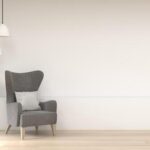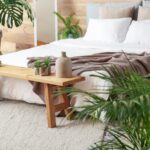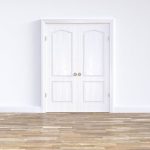The world of home decor is a playground of colors, with each hue holding the power to evoke emotions, set moods, and transform spaces. Whether you’re looking to create a serene sanctuary or a vibrant and energetic atmosphere, understanding the impact of color in home decor is essential.
In this article, we will dive into the influential role that color plays in our homes, exploring its psychological effects and guiding you on how to shop for home decor based on color.
The colors we surround ourselves with have a profound effect on our well-being and can significantly influence our mood and behavior. From calming blues to energizing yellows, each color carries its own unique qualities and associations. By consciously selecting colors that align with the desired atmosphere or purpose of each room, you can curate a space that not only visually appeals but also enhances your daily life.
Choosing the right color scheme for your home can be an exciting yet daunting task. With countless hues, shades, and tones to choose from, it’s important to understand different color schemes and how they work harmoniously together.
In this article, we will provide you with practical tips and guidance on finding the perfect color palette for your home decor. Whether you prefer neutral tones for their timeless elegance or want to embrace bold hues to add personality and excitement, we’ve got you covered.
Unleash your inner artist as we delve into the captivating world of home decor by color. With our step-by-step guide and inspiring examples of color-themed decor, you’ll be equipped with the knowledge and resources needed to bring your vision to life. So let’s embark on this colorful journey together as we explore the limitless possibilities that await within your own abode.
Understanding Color Psychology in Home Decor
When it comes to home decor, color plays a crucial role in creating the desired atmosphere and aesthetic for each room. Different colors have the power to evoke specific emotions and influence our moods and behaviors. Understanding the principles of color psychology can help you make intentional choices that align with the purpose of each space in your home.
Color psychology is the study of how different colors impact human behavior and emotions. Each color has its own psychological effects, with warm colors like red, orange, and yellow often associated with energy, excitement, and happiness. On the other hand, cool colors like blue, green, and purple tend to create a sense of calmness, serenity, and relaxation.
When it comes to choosing colors for your home decor, it’s important to consider the overall atmosphere you want to create for each room. For example, bedrooms are typically spaces where we seek rest and relaxation, so using cool and calm colors such as soft blues or muted greens can enhance that sense of tranquility.
In contrast, if you want to infuse energy and vibrancy into a living room or an office space where creativity is encouraged, incorporating bold and bright hues like vibrant reds or sunny yellows can help create an uplifting environment that stimulates productivity and inspiration.
How to Shop Home Decor by Color
When it comes to shopping for home decor, one effective approach is to choose items based on color. Shopping home decor by color allows you to create a cohesive and visually pleasing space that reflects your personal style. However, with so many options available, it can be overwhelming to know where to start. That’s why we have put together this step-by-step guide on how to shop home decor by color.
Step 1: Identify Your Desired Color Palette
Before you begin shopping, take some time to identify the color palette you want for your space. Consider the overall mood or atmosphere you want to achieve in each room. For example, if you want a calming and peaceful bedroom, consider soft blues or greens as your main colors. If you’re aiming for a vibrant and energetic living room, opt for bold and bright hues like reds or yellows.
Step 2: Understand Different Color Schemes
Familiarize yourself with different color schemes and how they can be implemented effectively in your home decor. Some common color schemes include monochromatic (using variations of a single color), complementary (pairing colors opposite each other on the color wheel), triadic (using three colors evenly spaced around the wheel), and analogous (choosing colors next to each other on the wheel).
Step 3: Start Small and Build Up
When shopping for home decor by color, it can be helpful to start small and gradually build up your collection of items in your desired colors. Begin with accent pieces like throw pillows, vases, or artwork that incorporate your chosen colors. Once you have established a base, you can then move on to larger items such as furniture or curtains.
By following this step-by-step guide, you can effectively shop for home decor based on color and create a space that is visually stunning and tailored to your taste. Remember that experimenting with different combinations of colors is part of the fun, so don’t be afraid to get creative and try new things. Happy shopping.
Discovering the Allure of Neutral Tones
Neutral tones are a staple in home decor, offering timeless elegance and versatility to any space. These colors, such as beige, gray, and white, provide a calming and sophisticated backdrop that can be easily paired with other hues or design styles. Whether you prefer a minimalist aesthetic or want to create a harmonious atmosphere, incorporating neutral tones into your home decor can help achieve the desired look.
One of the benefits of using neutral colors in home decor is their ability to create a sense of balance and simplicity. By opting for neutral walls or furniture, you provide a clean canvas that allows other elements in the room to stand out. This creates an opportunity to showcase vibrant artwork, decorative accents, or bold furniture pieces without overwhelming the space.
To incorporate neutral tones effectively into your home decor, consider these tips:
- Layer different shades of neutrals: Experiment with various shades of whites, grays, or beiges to add depth and dimension to your space. Mixing warm and cool neutrals can create visual interest while maintaining a cohesive look.
- Play with texture: Since neutral colors may appear monotonous when used alone, introduce texture through different materials like woven fabrics, faux fur rugs, or textured wallpaper. This adds visual appeal and prevents the space from feeling flat.
- Add pops of color: While neutrals are often associated with muted tones, you can still inject small bursts of color into your decor. Consider using colorful throw pillows, patterned curtains, or vibrant artwork to create focal points within the room.
By embracing the allure of neutral tones in your home decor scheme, you can create an elegant and versatile space that serves as a foundation for endless design possibilities. Whether you’re going for a minimalist look or want to incorporate other colors and patterns into your decor down the line, neutrals offer a solid starting point for any style preference.
Embrace Vibrancy with Bold and Bright Hues
Bold and bright colors can add excitement and personality to any home decor. If you’re looking to make a statement or create a focal point, incorporating vibrant hues is the way to go. Whether you choose to use them sparingly as accents or go all out with bold-colored furniture or walls, these colors can transform your space into a lively and energetic environment.
To effectively embrace vibrancy in your home decor, start by identifying the areas that could benefit from some color. Consider rooms that lack visual interest or areas that are in need of a little extra energy. These spaces are perfect opportunities to experiment with bold and bright hues.
One popular way to incorporate vibrant colors is through accent pieces such as pillows, rugs, curtains, or artwork. These smaller elements can instantly inject doses of color into your space without overwhelming the overall aesthetic. Additionally, they give you the flexibility to change and update your color scheme easily if desired.
Another approach is to use bold and bright colors on larger pieces of furniture or even on an accent wall. This is an excellent option for those who want an impactful transformation without committing to painting an entire room. You can choose a vivid sofa, vibrant chairs, or even paint one wall in a bold hue while keeping the rest of the space neutral.
When working with vibrant colors, it’s essential to consider balance and harmony within your overall design scheme. Pairing bold hues with complementary shades can help create a cohesive look while toning down their intensity slightly. For example, if you have a bright yellow accent wall, consider adding black and white accessories or neutral furniture pieces to provide contrast and balance.
Embracing vibrant colors in your home decor allows you to showcase your personality and bring energy into your living spaces. By strategically incorporating these hues through accents or statement pieces, you can create a visually stimulating environment that reflects your unique style.
The Serenity of Cool & Calm Colors
Cool and calm colors have a unique ability to create a serene and tranquil atmosphere in our homes. These colors, such as blues, greens, and purples, are often associated with nature and water, which can evoke feelings of peace and relaxation. In this section, we will explore the calming effects of cool colors and how they can be used to create a peaceful and refreshing ambiance in our living spaces.
To harness the serenity of cool colors in your home decor, start by selecting the right shades that align with your desired atmosphere. Lighter shades of blue, green, or purple can create a soothing environment, while darker tones may bring a sense of depth and sophistication. Consider using these colors in areas where you want to promote relaxation and tranquility, such as bedrooms or meditation spaces.
In addition to wall colors, incorporating cool-colored accessories and furnishings can further enhance the calming effect. Opt for furniture pieces in soft blue or green hues, or add throw pillows in cool-toned fabrics to create a cohesive look. Artwork featuring serene landscapes or abstract patterns with cooler colors can also bring a sense of tranquility to your space.
| Color | Psychological Effect |
|---|---|
| Blue | Elicits feelings of calmness, trust, and relaxation |
| Green | Symbolizes harmony, growth, and renewal; promotes feelings of balance and peace |
| Purple | Associated with spirituality and luxury; inspires creativity and introspection |
By incorporating cool-colored elements into your home decor, you can create a sanctuary where you can unwind from the stresses of everyday life. The serenity of cool colors brings a sense of tranquility to your living space, helping you create a peaceful and refreshing ambiance that promotes relaxation and rejuvenation. So embrace the calming effects of cool and calm colors, and transform your home into a serene oasis.
Overall, understanding color psychology in home decor allows us to harness the power of color to create the desired atmosphere in our living spaces. Whether it is with cool and calming colors or bold and vibrant hues, choosing the right color scheme can significantly impact the way we feel and experience our homes. So take the time to explore different color options, experiment with combinations, and let your creativity shine through in your home decor choices.
Warm & Inviting
When it comes to home decor, the choice of colors plays a crucial role in creating a warm and inviting atmosphere. Warm colors have inherent characteristics that evoke feelings of coziness, comfort, and intimacy. By understanding the power of warm colors and how to incorporate them into your home, you can transform any space into a welcoming retreat.
The Inherent Warmth of Warm Colors
Warm colors include shades of red, orange, yellow, and brown. These hues are associated with fire, sunsets, and nature’s autumnal palette. They have an innate ability to create a sense of warmth through their visual characteristics. The rich undertones exude energy and create a cozy ambiance that invites people to relax and feel at ease in a space.
Creating a Cozy Atmosphere
To harness the power of warm colors in your home decor, consider incorporating these shades in different areas throughout your space. In rooms where you want to promote relaxation and comfort, such as bedrooms or living rooms, opt for warm hues like deep reds or earthy browns on walls or large furniture pieces. These colors will envelop the room with a sense of warmth.
Incorporating warm colors through accessories and accent pieces is another effective way to infuse warmth into your space. Consider adding throw blankets or pillows in shades of orange or golden yellow on sofas or chairs to instantly create an inviting atmosphere. Additionally, artwork featuring warm tones can add visual interest while enhancing the overall coziness.
Adapting Warm Colors for Different Spaces
While warm colors are well-suited for creating inviting spaces in living areas and bedrooms, they can also be used effectively in other areas of your home. For example, kitchens can benefit from warm color accents through cabinets with rich wood finishes or accessories such as copper cookware or warm-toned tiles. Bathrooms can be transformed into luxurious sanctuaries with the use of warm colored towels or bath mats.
Remember, when using warm colors in your home decor, it’s essential to strike a balance to avoid overwhelming the space. Integrate neutral tones or cool colors as a contrast to create depth and add balance. By carefully balancing warm colors with complementary hues, you can ensure that each room exudes a sense of warmth and welcomes anyone who enters.
Go Beyond the Rainbow
When it comes to home decor, why limit yourself to just one or two colors? Embracing a multicolor palette can add vibrancy, personality, and uniqueness to your living spaces. Multicolor home decor allows you to showcase your creativity and create an environment that reflects your individual style. In this section, we will explore the beauty of a vibrant and diverse color palette in home decor and provide tips for harmoniously incorporating multiple colors.
One way to incorporate multiple colors into your home decor is through the use of color blocking. Color blocking is a technique where different blocks or sections of color are used together to create bold and eye-catching designs. For example, you might choose a statement piece of furniture in a bright blue color and then pair it with accent pillows in contrasting yellow and green tones. This creates a visually striking look that adds personality to your space.
Another way to introduce multicolor elements is through accessories and artwork. Incorporating items such as colorful rugs, throw blankets, or wall art can instantly transform the ambiance of a room. Consider choosing pieces that feature a range of complementary or contrasting hues to create visual interest.
To ensure that your multicolor home decor remains visually cohesive rather than overwhelming, it’s essential to have some grounding factors in place. One way to achieve this is by selecting a dominant neutral color as the foundation for your space. This could be the color of the walls or larger pieces of furniture, such as sofas or cabinets. By anchoring your design with a neutral base, you allow the colorful accents to shine while maintaining balance.
Incorporating multiple colors into your home decor offers endless possibilities for creativity and personal expression. Whether you opt for bold and contrasting combinations or prefer softer palettes with complementary shades, embracing multicolor elements can bring beauty and energy into any room.
| Tips for Incorporating Multicolor Home Decor | Benefits of Multicolor Home Decor |
|---|---|
| – Use color blocking techniques to create bold and eye-catching designs | – Adds vibrancy and personality to your living spaces |
| – Incorporate accessories and artwork featuring complementary or contrasting hues | – Showcases your creativity and individual style |
| – Ground your design with a dominant neutral color to maintain balance | – Offers endless possibilities for personal expression and experimentation |
Shop Home Decor by Color
In today’s digital age, shopping for home decor has become easier than ever before. With just a few clicks, you can find an abundance of online resources and inspirations to help you shop home decor by color. Whether you are looking for specific pieces or seeking inspiration for your next project, these online platforms offer a wide range of options to cater to your needs and preferences.
Online Retailers
One of the most convenient ways to shop home decor by color is through online retailers. Platforms such as Amazon, Wayfair, and Overstock provide a vast selection of products in various colors, allowing you to filter your search and easily find items that match your desired color scheme.
These websites often have user-friendly interfaces that enable you to browse through different categories such as furniture, textiles, wall art, and more. You can also read reviews from other customers to ensure the quality and satisfaction of the products.
Interior Design Websites
If you are looking for design inspiration along with your shopping experience, interior design websites can be an excellent resource. Websites like Houzz, Elle Decor, and Architectural Digest not only showcase stunning photography of beautifully designed spaces but also provide articles and guides on how to incorporate different colors into your home decor. These platforms feature curated collections and ideas from professional designers that can inspire you to create cohesive color schemes in your own space.
Social Media Platforms
Social media platforms have revolutionized the way we discover new trends and find inspiration for our homes. Instagram in particular is a treasure trove of interior design ideas based on color themes. By following hashtags such as #homedecor or #interiordesign, you can explore countless posts from individuals and brands who share their creative use of color in their homes.
Pinterest is another popular platform where users curate boards filled with images related to specific color schemes or styles. Both Instagram and Pinterest allow you to save your favorite images for future reference or click through to the original source to make purchases.
By utilizing these online resources and inspirations, shopping home decor by color becomes an enjoyable and efficient process. Whether you have a specific color in mind or are seeking inspiration for a complete color overhaul, these platforms offer a vast array of options and ideas to help you create a beautiful and cohesive living space. So go ahead, unleash your inner artist and let the colors transform your home into a reflection of your personal style and taste.
Conclusion
In conclusion, the power of color in home decor cannot be underestimated. Throughout this article, we have explored the impact of color on our emotions and home aesthetics. We have learned about color psychology and how different colors can affect our moods and behaviors. By understanding the psychological effects of colors, we can choose color schemes that align with our desired atmosphere and purpose for each room.
Shopping for home decor by color can be an exciting adventure. By following a step-by-step guide, we can find the perfect color palette for our homes. Whether we prefer neutral tones for their timeless elegance and versatility, bold and bright hues to add excitement and personality, cool colors for their calming effects, or warm colors to create a cozy ambiance, there is a wide range of options available.
It is important to remember that incorporating multiple colors into our home decor is not only possible but also highly encouraged. Multicolor home decor allows us to embrace the beauty of a vibrant and diverse color palette. The key is to harmoniously combine multiple colors without creating visual clutter. By utilizing online resources and inspirations, we can gather ideas and find the perfect pieces to bring our colorful vision to life.
Frequently Asked Questions
What color makes you shop more?
The color that makes me shop more is red. Red is known to stimulate appetite and increase energy levels, making it a popular color choice for many restaurants and fast-food chains.
When I see the color red in a shop, it grabs my attention and evokes a sense of urgency or excitement, which can influence me to make impulse purchases or explore the store further. Additionally, red is often associated with sales and discounts, so seeing this color can also give me the impression of finding good deals.
What Colours are attractive for a shop?
Attractive colors for a shop can vary depending on various factors such as the target audience, industry, and overall brand identity. However, some colors that are generally considered attractive for shops include warm tones like yellow and orange because they evoke feelings of happiness and cheerfulness. These colors can create a welcoming atmosphere and encourage customers to stay longer in the store.
Additionally, soft neutrals like white or beige can give a sense of cleanliness and sophistication. They provide a versatile backdrop that allows products to stand out without overwhelming customers.
How do interior designers choose colors?
Interior designers choose colors based on several principles such as the desired mood or atmosphere, client preferences, and the purpose of the space. They consider the function of each room or area within a space before selecting colors that align with its intended use. For example, calming shades like blues or greens may be chosen for bedrooms or relaxation spaces to create a serene environment.
On the other hand, vibrant colors like bold yellows or purples might be selected for areas meant to invoke creativity or energy, such as offices or playrooms. Designers also consider factors like lighting conditions and existing architectural elements when choosing colors to ensure harmony and cohesion within the overall design scheme.

I’m thrilled to be your companion on this exciting journey through the world of home decor and design. With a passion for turning houses into homes and a keen eye for the finer details, I’m here to help you transform your living spaces into beautiful, functional, and meaningful havens.





